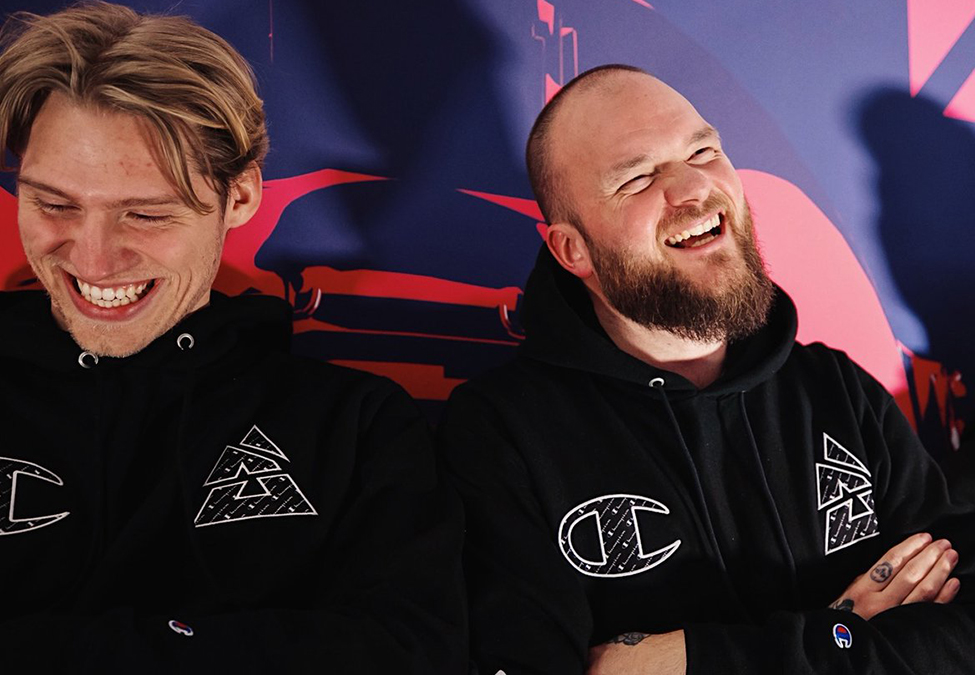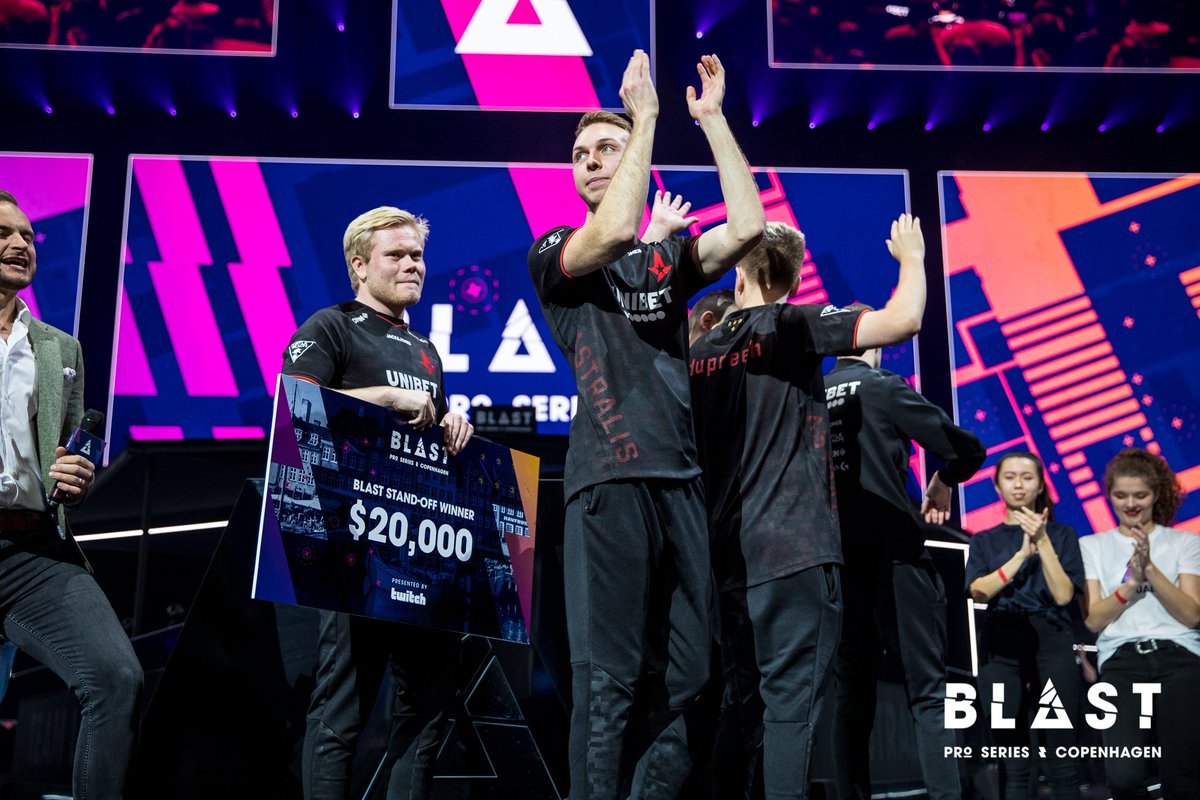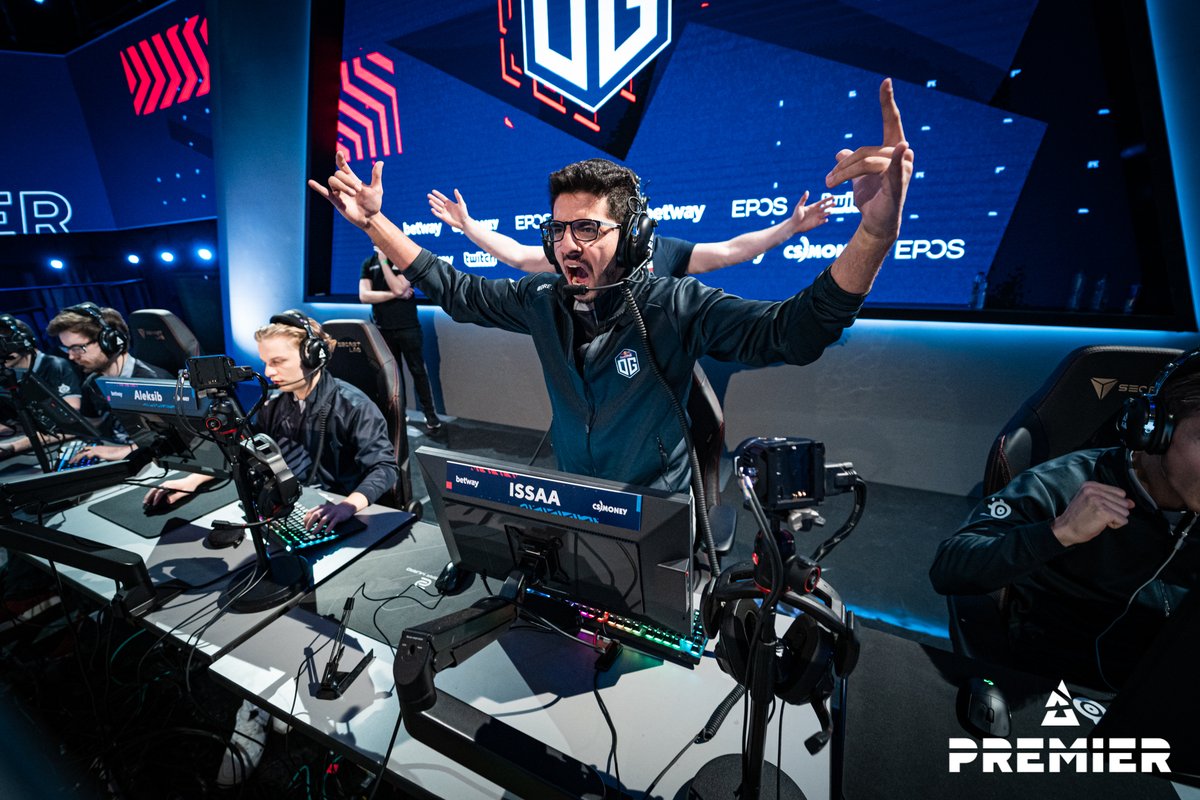Things have changed drastically in the Counter-Strike: Global Offensive ecosystem in the past few months, with ESL and FLASHPOINT going to war in an attempt to produce a healthier scene for all.
Where does BLAST, the tournament organiser that split from Astralis in mid-2019, fit into the evolving landscape? How did it turn public perception around with a single tournament? How will the aforementioned changes really affect CS:GO? Esports Insider spoke with Nicolas Estrup, Director of Product & Experience for BLAST, to get some answers.

RFRSH Entertainment owning and operating both Astralis and BLAST led to comments and criticism from those in the scene, stating a conflict of interest as possible with the team competing in BLAST events. In a move that was seen as conceding to the peer pressure by some, BLAST and Astralis officially split in August last year.
“Back in that whole transitional period, to the public, it may have seemed as if it happened in a very short amount of time,” said Estrup of the separation. “For us working there, it was always on the cards. Back in the period where popular opinion wasn’t always swaying in our favour, we always tried to be really transparent when it came to that. My whole team worked on BLAST ever since that we conceptualised it, we were a pretty big group of people that worked on nothing but BLAST, so we were pretty much already in two already.
“There were different resources that went from one side to the other where it made sense, but for the majority of the time, we were pretty split up – especially in the last six months or so leading up to when the split actually happened,” he continued. “So when it came to doing it, I think the majority of staff felt the way that all the cards landed on the table made sense already.”
In the months following the uncoupling of BLAST and Astralis Group, both companies seemingly did quite well. Could that be chalked up to the new lease of life, spared of public scrutiny, or was it just business as usual with the split having minimal impact?
“For both parties, it was a fresh start,” Estrup explained. “A split like that is always tricky, you never know how employees are going to take it and public perception is a consideration also. The most important thing was to make sure that employees felt informed and making that a good transition was the first step. Even though we internally knew that we were split up already, for everyone working there it was just a weight off of their shoulders. It meant that all of a sudden, we’re all looking towards the same goal.”
“It was business as usual when the split happened because the event structure was so well put in place, doing it after the split was just like any other event because we had the same people working on it,” he continued.
With a clear divide already existing between the two properties while they were under one roof, it begs the questions as to how the working relationship is now. With Astralis competing in BLAST Premier, BLAST and Astralis Group have to cooperate with each other on a regular basis. “There’s obviously no Floyd Mayweather vs. Conor McGregor vibe,” joked Estrup. “I just think it was important to physically move away from each other. Not because we dislike each other, just to make operations a lot smoother and feel like a new beginning. The working relationship has been good.”
“We always made sure at BLAST events that Astralis wasn’t favoured and we had to make that very clear,” he added. “There could be situations where Astralis would maybe get the smallest of the practice rooms in some hotels because we just didn’t want to send any bad signals. That was just the world we lived in the back then, where I think now we’re in a place where their demands to us as the tournament organiser is just as high as any other.”
“Overall, it’s business as usual. There’s still good vibes all around.”

Changing public perception
The aforementioned concern of a conflict of interest between BLAST and Astralis wasn’t the only issue plaguing the tournament organiser’s public perception. Utilising a format that was heavy on best-of-one matches, some argued that it didn’t allow for a fair and exciting competition between teams. Moving into 2020 however, especially following the BLAST Premier Spring Regular Season in London, UK, it’s perhaps never been better for the company in the court of public opinion.
As Estrup explains, however, chances were in the pipeline for BLAST’s events for quite some time, utilising the knowledge gained from two years of operations to put its best foot forward going into the new year.
“For a long time we knew that we wanted to change a lot of things for 2020,” he explained. “That was based on all the learnings from 2017 to 2019. All of that gave us even more knowledge on how we could operate, how we could change things for the better, and make it in a way where we still feel like we’re true to what we wanted to achieve. It’s easy to sit at home and think “Why can’t they change the format? Why can’t it be a five-day event now?” In reality, we booked the venue for only two days.”
“Instead of rushing into changes and pleasing people immediately, we made a longer play and eased into what we then saw as being our 2020 format,” he continued. “Something that we’ve reflected on internally is we may have been in a place in 2018 and 2019 where we were very reactive. Not necessarily in a negative way, but just reactive where if someone said suggested something, we’d make crazy movements. That happened in Istanbul, we moved the event to not have to be on top of the exams after hearing from students.”
It’s not just implementing learnings from the past two years that has allowed BLAST to alter peoples’ opinions on it, it’s purposefully gone out of its way to be more transparent. Speaking to Esports Insider is an example of such an effort, providing honest and clear answers to questions that are on the minds of many.
“We’ve changed some of the ways in how we communicate externally, too,” said Estrup. “I was less vocal before, partly because we were just running so fast. What’s beautiful about the Counter-Strike community is that it’s ruthless, which is both beautiful and scary. It means that their love can go both ways. If we go and talk to well-established media, we’re probably less transparent than when I talk to you because that will go straight to the core demographic where we can be a bit more open because they expect that, they want that, and they respect that even more.”

CS:GO’s evolving landscape
FLASHPOINT is dubbed the first team-owned league in the Counter-Strike: Global Offensive environment, and ESL has established its Louvre Agreement with 13 partnered teams to provide better financial support to the organisations and players that inhabit the scene. With those two entities engaging in back-and-forth remarks and debates on social media, BLAST is no longer the primary target in public discourse.
“Something that we felt like we did right was to come out as quickly as we could with our 2020 plan so that people understood it and knew what teams we were talking to,” Estrup said. “We just wanted to put everything on the table before it rolled out, we showed the new format and the new studio set-up, which was different than most others.
What’s worth inspecting is BLAST’s position in the calendar in comparison to the two leagues that are vying for the top spot. Estrup believes that BLAST actually complements both FLASHPOINT and ESL, instead of competing alongside them.
“I feel like we’ve ended up where we wanted to in the scene,” he told Esports Insider. “In 2018, part of our discussions was that having a league would be the reasonable thing. We later realised there wasn’t going to be a need for leagues, there’ll be plenty of them. We thought “Why don’t we just try to create a high level of competitive play in unique packaging?” to stand out from what else is going to come in the ecosystem.
“With the setup we’ve made now and with ESL Pro League & FLASHPOINT, they play into our format,” he continued. “Where there are leagues being formed, we fall on top of that somehow. I think the UEFA Champions League is a good reference from the football world, there are plenty of leagues but they need somewhere to play where they can all clash.”

The importance of media rights
The sale of media rights is not an anomaly in esports but, especially in CS:GO, a trend is emerging where ESL, FLASHPOINT, and BLAST are selling broadcast rights on a regional basis. Just in February, DAZN acquired the Brazilian media rights to BLAST Premier, for example.
With ongoing discussions taking place in regards to monetising the industry, one that typically sees fans receive plenty of content for absolutely no content, Estrup believes that such deals will be crucial and commonplace going forward. “We all talk about how esports is going to be a financially stable ecosystem that can actually begin to thrive, I think broadcast rights plays a massive part in that,” he explained. “The more eyeballs we can get, the better it is for everyone.
“On top of that comes the fact that eyeballs come at a cost,” he continued. “Having these partnerships and these companies wanting to buy-in costs and that’s where we make money. I think that is something which will increase rapidly and if you look at any of the traditional sports, the number one thing they make a ton of money on is broadcast rights. With esports, we’ve been in a weird but beautiful place where people just get everything for free.
“The beauty of what we’ve seen in such partnerships is growth for ourselves, more eyeballs, and better broadcasts, but also more brand value to the players. Broadcast deals are a massive part of what we want to do.”

